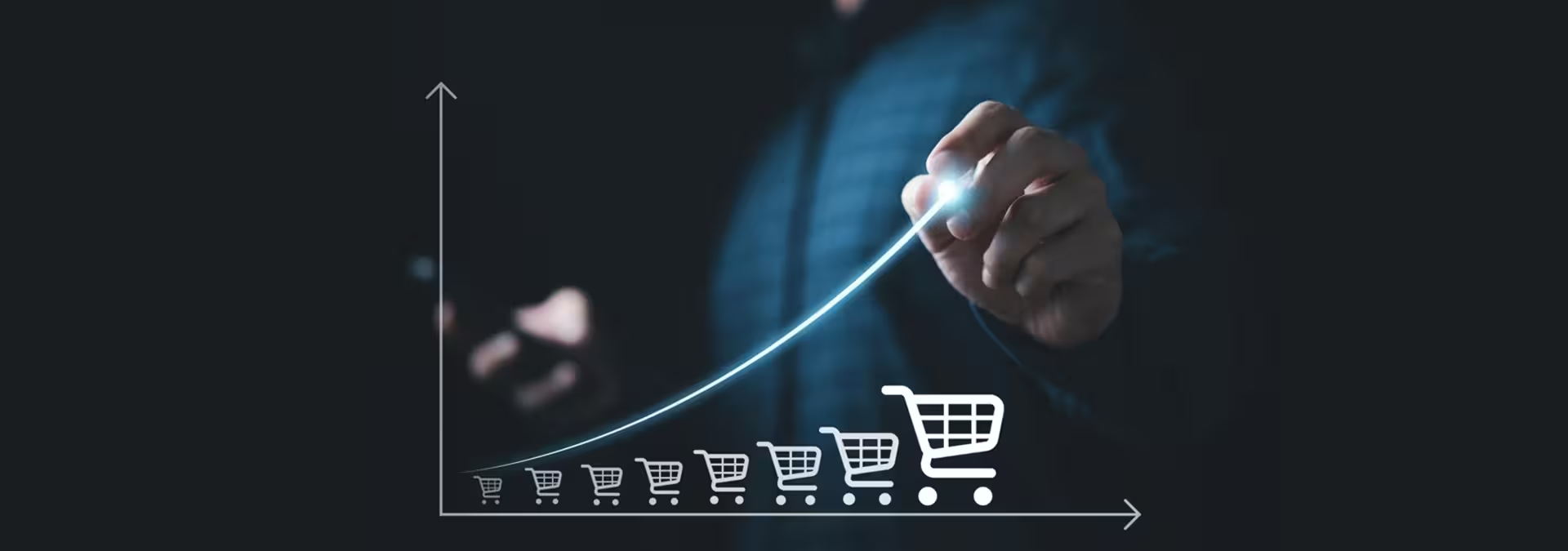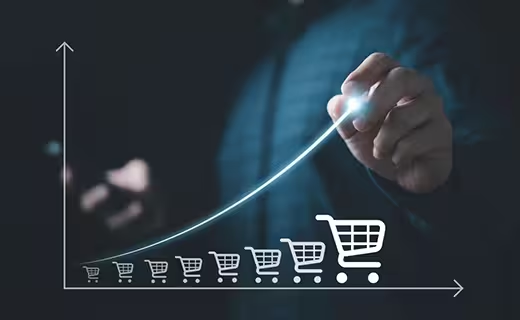
Even though it shows a mere percentage compared to the traffic, the Conversion rate is a crucial metric for an e-commerce business. It measures the percentage of online store visitors who take a desired action, such as purchasing. A high conversion rate means that many visitors find worth in your online store and are more likely to become loyal customers. This article will discuss techniques to improve your conversion rate and attract more customers to your eCommerce website.
Table of Contents
Why is the conversion rate significant?
Being a merchant and having operational notes, there is no need to share the definition of the conversion rate here. : So let's quickly go and check the significance of it. Conversion rate measures the effectiveness of the website in turning visitors into customers. A high conversion rate means your website effectively communicates the value of your products or services and that visitors can easily find what they are looking for. On the other hand, A low conversion rate can indicate issues with your eCommerce website preventing visitors from taking the desired action. These issues could include a poor user experience, a lack of trust and credibility, or clear calls to action. In addition to providing insight into the effectiveness of your website, the conversion rate is also an important metric for understanding the overall performance of your business. A high conversion rate can lead to increased revenue and higher profits, while a low conversion rate can indicate a need to change your website or marketing strategies. Overall, the conversion rate is a crucial metric that can provide valuable insights into the performance of your website and business and help you make data-driven solutions about how to improve your online presence and attract more customers.
How to measure the conversion rate?
Measuring the conversion rate of your e-commerce website is relatively straightforward. To calculate your conversion rate, simply divide the number of conversions (i.e. the number of visitors who take the desired action, such as making a purchase or filling out a newsletter) by the number of visitors to your website. For instance, if your website received 100 visitors and 10 of them made a purchase, your conversion rate would be 10%. It's important to note that there are varied conversion rates, like purchase conversion rate, lead conversion rate, newsletter sign-up conversion rate, etc. So, deciding which action to track and optimize before measuring the conversion rate is crucial. The overall conversion rate for e-commerce websites is typically around 2-3%. However, this varies greatly depending on the industry, with some industries having much higher conversion rates and others having much lower conversion rates. Please note that conversion rate optimization is a continuous process, and even if you achieve a high conversion rate, it's important to continuously monitor and improve it. Also, with the increasing competition and technological advancements, it's important to stay updated with the latest optimization strategies. There has been an increase in mobile traffic, and an eCommerce website needs to have a mobile-optimized website as mobile conversion rates tend to be lower than desktop.
How to Increase Conversions on your eCommerce website?
There is always room for improvement when it comes to the online store. There are many ways to increase conversions on an e-commerce website; some of the most effective approaches include the following:
Improving the user experience
Make sure your website is easy to navigate and that shoppers can find what they're looking for swiftly and efficiently. This includes having a clear and well-organized menu, using good-quality images and videos to showcase your products, and providing clear product descriptions.
Building trust and credibility
Ensure that your website has a professional design and that it is secure. Use customer reviews, testimonials, and trust badges to build trust and credibility.
Creating a sense of urgency
Use limited-time offers and promotions to create a sense of urgency and encourage visitors to take action.
Optimizing your call-to-action
Make sure your call-to-action (CTA) is clear, prominent, and easy to understand. Test different variations of your CTA to check which one performs the best.
Personalization
Use personalization techniques to make visitors feel valued and understood. Use customer data to create tailored product recommendations, messaging, and offers. There are third-party solutions available to help you create personalized Shopping experiences for your customers. Or start with Google Analytics to gather the information and work it out.
Optimize your checkout process
Make sure your checkout process is as simple and seamless as possible. Reduce the number of steps and fields in the checkout process, and ensure the process is secure.
Retargeting
Use retargeting campaigns to reach visitors who have left your website without making a purchase. You can encourage them to return to your website and complete their purchase by retargeting them.
Use social proof
Show off the number of happy customers and positive reviews you have to build trust and encourage visitors to purchase. There are ways you can put the trust mark on your online store, and to take a look at what they are, read this.
Payment Convenience
Offering multiple payment options, such as credit card, PayPal, or Apple Pay, can increase conversions as it makes it more convenient for customers to make a purchase. Even with the latest trends on Buy-no-pay-later, Credit/debit card purchases and more can lead to better conversions.
Mobile optimization
It can increase conversions by ensuring that the site is easy to navigate and use on mobile devices, which are increasingly being used to browse and make purchases online.
Delivery options
Offering delivery and product discounts can increase conversions by making it more convenient and affordable for customers to purchase. Ensure easy return policies and post-purchase experience, as it will make or break brand loyalty and let the customers repeat the purchase. By now, Using these methods, retailers can improve the user experience, build trust and credibility, create a sense of urgency, and optimize their call-to-action, which will help increase conversions on your e-commerce website. Remember that tracking and measuring your conversion rate is essential to make data-driven decisions to improve your website and attract more customers.
Statistics to examine for Conversion rate optimization in e-commerce websites
Retailers mostly watch store traffic and purchases and decide on conversions. Well, it is not only the case, mate! A variety of statistics can be helpful to look at when trying to optimize the conversion rate of your e-commerce website. Some of the key statistics to look for include the following:
Bounce Rate
The bounce rate calculates the percentage of visitors who leave your online shopping website after only viewing one page. A high bounce rate can indicate that shoppers need help finding what they're looking for or that your website needs to provide a good user experience.
Time on site
This measures the average amount of time that visitors spend on your website. A high time on site can indicate that visitors are engaged and finding your website useful, while a low time on site can indicate that visitors are not finding what they're looking for or that your website is not providing a good user experience.
Pages per session
This measures the average number of pages shoppers view during a single session on your store. A high number of pages per session can indicate that visitors are engaged and finding your website useful, while a low number of pages per session can indicate that visitors are not finding what they're looking for or that your website is not providing a good user experience.
Conversion rate
This measures the percentage of online shoppers who take a desired action, such as purchasing or filling out a form. A high conversion rate can indicate that your website is converting visitors into customers, while a low conversion rate can indicate that your website is not providing a good user experience or that your call-to-action is not compelling.
Cart abandonment rate
This measures the percentage of visitors who add items to their shopping cart but leave your website without completing their purchase. A high cart abandonment rate can indicate that your checkout process is not user-friendly or that there are issues with your payment gateway.
Average order value
This measures the average value of an order placed on your website. A high average order value can indicate that your website is effectively upselling and cross-selling to customers, while a low average order value can indicate that your website is not providing a good user experience or that your pricing is not competitive.
Return rate
This measures the percentage of customers who return to your website and make another purchase. A high return rate can indicate that your website is providing a good user experience and that customers are satisfied with their purchases, while a low return rate can indicate that your website is not providing a good user experience or that customers are not satisfied with their purchases. By monitoring these key statistics, you can gain insights into how visitors are interacting with your website and identify areas for improvement. This will aid you in optimizing your website and improve your conversion rate over time.
Conclusion
Conversion rate is what retailers should understand, and using various factors and different statistics will lead them to better results. If you need assistance with your Magento or Shopify store to understand and implement various techniques, you can drop us a mail. We have helped many merchants to optimize their eCommerce store and conversion. Let's get the best and most simplified solutions for your commerce stores. Ask us.

